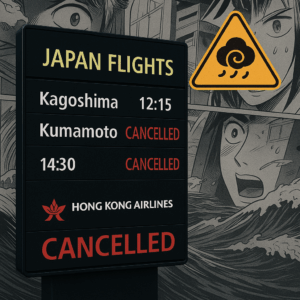For over two decades, Jetstar Asia has been a go-to for budget-conscious travelers zipping across Asia. Launched in 2004 by Qantas to tap into the booming low-cost air travel market, this Singapore-based carrier carved out a niche with its affordable fares and warm service. But now, Qantas has announced that Jetstar Asia will cease operations, leaving travelers wondering what’s next for budget travel in the region.
Why Is Jetstar Asia Shutting Down?
The decision to close Jetstar Asia comes down to tough economics. The airline has been grappling with:
- Rising Supplier Costs: From fuel to maintenance, expenses have soared, squeezing profit margins.
- High Airport Fees: Operating out of Singapore, one of Asia’s priciest hubs, hasn’t helped.
- Fierce Competition: Rivals like AirAsia and Scoot have intensified the battle for budget travelers, making it harder for Jetstar Asia to stand out.
Despite its 51% ownership by Singapore’s Westbrook Investments and 49% by Qantas, the airline struggled to stay viable in this cutthroat market. Fans of the airline, like one commenter on Jetstar Asia’s Facebook post, expressed heartbreak, calling it a “very warm, efficient, wonderful airline.” But sentiment alone couldn’t keep the planes flying.
What This Means for Travelers
If you’re planning a trip across Asia, Jetstar Asia’s exit might shake things up. Here’s what to expect:
- Fewer Budget Options: With one less low-cost carrier, competition could ease, potentially driving up fares on some routes. Keep an eye on AirAsia and Scoot, which may fill the gap but could also capitalize on reduced rivalry.
- Route Changes: Jetstar Asia’s network, covering destinations like Bangkok, Kuala Lumpur, and Bali, will vanish. You’ll need to check alternative airlines for these routes, which might mean longer layovers or pricier tickets.
- Loyalty Program Impact: If you’ve racked up Qantas Frequent Flyer points through Jetstar Asia, don’t worry—Qantas has confirmed that points and bookings will be honored or refunded. Still, double-check your travel plans to avoid surprises.
The Bigger Picture for Budget Airlines
Jetstar Asia’s closure reflects broader challenges in the low-cost airline industry. Asia’s budget travel market is a paradox: massive demand but razor-thin margins. Carriers like AirAsia have thrived by scaling up and diversifying, while smaller players like Jetstar Asia struggle to keep pace. Qantas, focusing on profitability, seems to be cutting its losses to strengthen its core operations.
This move also raises questions about the sustainability of budget airlines in high-cost hubs like Singapore. Could we see more carriers shift to secondary airports or lean harder into digital innovations to cut costs? Only time will tell.
Tips for Navigating the Change
At Airseeker.com, we’re all about helping you find the best travel deals, no matter the shake-ups. Here’s how to stay ahead:
- Compare Fares Early: Use our platform to scout deals on AirAsia, Scoot, or even full-service carriers like Singapore Airlines, which sometimes offer competitive promotions.
- Stay Flexible: If your favorite Jetstar Asia route is gone, consider nearby airports or alternative destinations to keep costs down.
- Sign Up for Alerts: Get real-time updates on price drops and new routes by subscribing to Airseeker’s newsletter.
Looking Ahead
Jetstar Asia’s departure is a blow to budget travelers, but it’s also a reminder of how dynamic the airline industry can be. As competitors step in to fill the void, there’s still plenty of opportunity to explore Asia affordably. Stay savvy, plan smart, and let Airseeker.com guide you to your next adventure.
Source: BBC News, June 11, 2025








